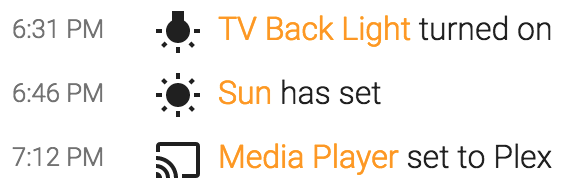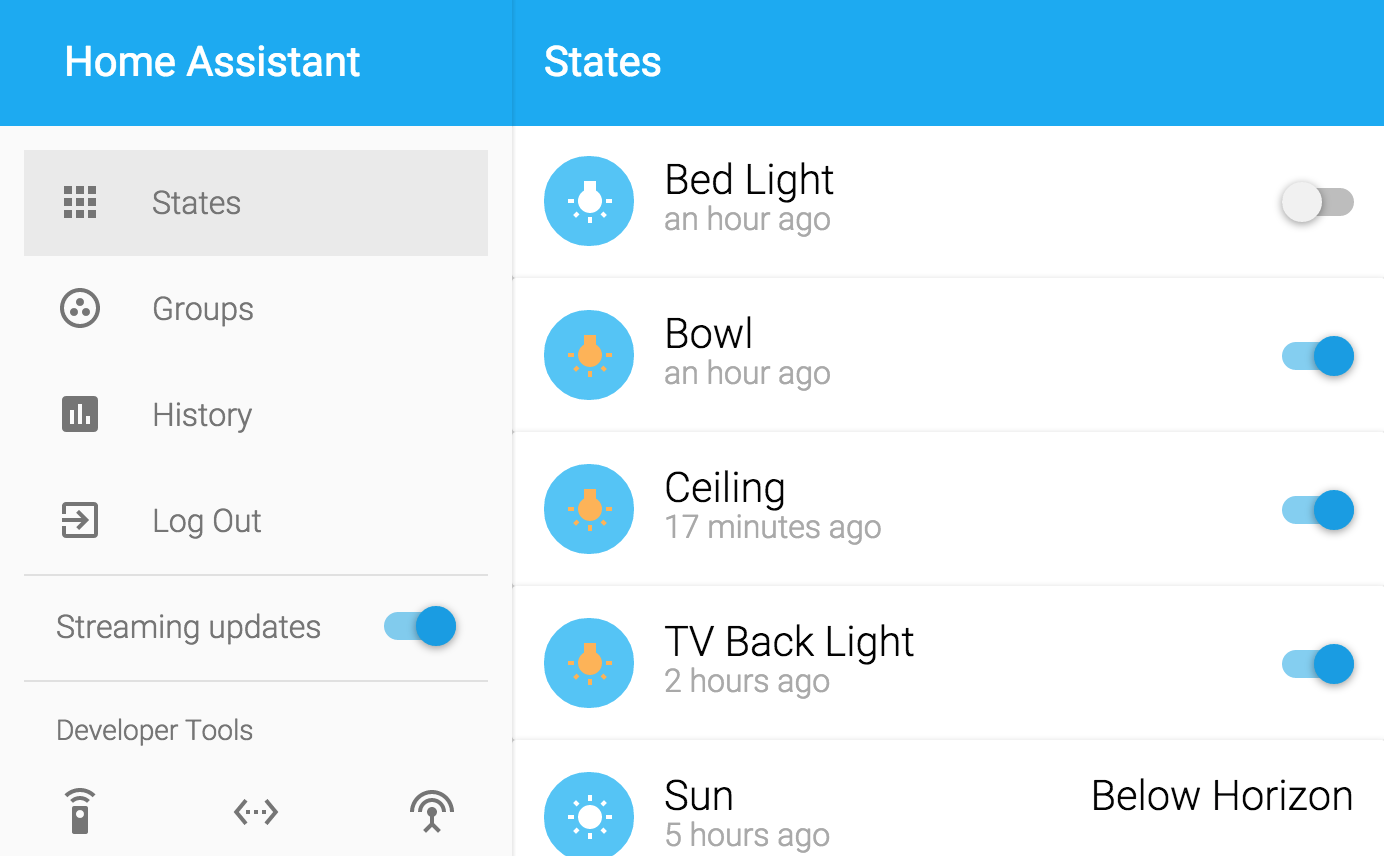It has only been a little over a week since Theodor introduced YAML support for Home Assistant but so much has already happened that it is time for a summary of recent changes. Before mentioning the highlights I want to thank andythigpen, jamespcole and theolind for numerous bug fixes, enhancements and new contributions. Thanks!
Monitor local resources.
Theodor has contributed a new sensor platform to allow you to monitor disk usage, memory usage, CPU usage and running processes. This platform has superseded the process component which is now considered deprecated.
# Example configuration.yaml entry
sensor:
- platform: systemmonitor
resources:
- type: disk_use_percent
arg: /home
- type: memory_free
- type: process
arg: kodi
Experimental Z-Wave support
There is now experimental support for connecting Z-Wave networks using a Z-Wave USB stick. Right now it only integrates Z-Wave sensors into Home Assistant. Our goal is to get this tested by more people before adding support for other Z-Wave devices.
The new component is built on top of python-openzwave. This package is currently not distributed on PyPi so we’ve added a script scripts/build_python_openzwave to install it on your machine. Alternatively you can use the Docker image which is ready to go.
The development was done using an AEON Z-Wave USB stick and an AEON Z-Wave MultiSensor.
# Example configuration.yaml entry
zwave:
usb_path: /dev/ttyUSB0
Voice control
An initial version of voice control for Home Assistant has landed. The current implementation consists of two parts.
The first part is a component called conversation that exposes the service conversation/process. This service is capable of processing text and translating them into commands for devices. For now it will only support commands in the format of Turn <Friendly Name> <on/off>.
The second part is an upgrade to the frontend to use the speech-to-text in Chrome to allow users to speak commands. If you’re using Chrome, you can test this out in the demo.
# Example configuration.yaml entry
conversation:


 I (Paulus) have added a logbook component. The logbook component provides a different perspective on the history of your house by showing all the changes that happened to your house in chronological order.
I (Paulus) have added a logbook component. The logbook component provides a different perspective on the history of your house by showing all the changes that happened to your house in chronological order.  The old logo, the new detailed logo and the new simple logo.
The old logo, the new detailed logo and the new simple logo.

